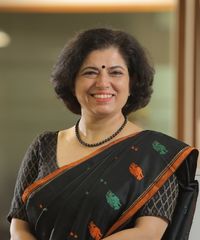Biotechnology & Biosciences Practice


PROFESSIONALS
YEARS EXPERIENCE
AWARDS
Creating & Defending Biotechnology & Biosciences Patents
The K&S team is a unique group of specialized patent attorneys with advanced technical degrees and specific expertise in new and cutting-edge scientific biological research. With a law degree to back their credentials, each attorney in the team is a well-rounded professional, equipped to service the biotech and biosciences sector, with a client repertoire ranging from universities, research institutes, and start-ups to renowned and well-known Indian and global companies.
Industry Specific Expertise
Biotechnology
Biochemistry
Biofertilizers
Biopharmaceuticals
Greentech/Green Chemistry
Biotherapeutics
Biomedical Technology
Healthcare products
Food
Nutraceuticals
Sub-Practice Areas
Services Offered in Biotechnology & Biosciences Patent Practice
Advisory & Opinions
K&S provides high-quality patent drafting services for inventions in biotechnology and allied areas along with portfolio development strategies. Search and analytical services are backed by legal opinion for patentability, invalidity, freedom to operate (FTO), patent landscape and infringement. The team is specialized in searching based on chemical structures and/or biological sequences.
Prosecuting complex cases before the Indian Patent Office, particularly with respect to Section 3 patentability exclusions.
Protection
Contentious proceedings such as pre-and post-grant oppositions, revocations, and infringement proceedings
Transactional
Patent evaluation and due diligence in M&A transactions, licensing, and assignment related matters
Biotechnology & Biosciences Patent Practice Attorneys

Ravi Bhola
Managing Partner

Dr. Goutam Bhattacharyya
Partner | Member of Management Committee

Priyanka Chopra
Partner | Practice Lead (Life Sciences)

Dr. Deepa K Tiku
Partner

Durgesh Mukharya
Partner
AWARDS & RECOGNITIONS






MEMBERSHIPS










Thought Leadership
Articles, blogs, whitepapers and case studies that reflect decades of IP leadership experience.
Frequently Asked Questions
A patent is a statutory privilege granted by the government to an inventor for a fixed and limited period of years to exclude others from making, using, offering for sale, selling or importing a product or a process, based on the patented invention, without the inventor’s prior permission. It is granted for an invention that is new, involves an inventive step and is capable of industrial application.
A patent application should be filed at the earliest possible without any delay. A delay in filing the application may pose the risk of losing the priority date if a third-party application for the same invention pre-empts such filing.
Patents are a crucial means to incentivize research and development by allowing inventors to capture the benefits of an invention for a limited period of time. The promise of such benefits is an important motivation for the expenditure of scarce resources and time with significant opportunity costs. A patent is valid for 20 years from the date of filing of the patent application, provided the required annual maintenance fees are paid on time. Following the expiry of this time period, the invention passes into the public domain and anyone is free to use the invention including manufacture, sale, etc.
This exclusive right is granted in exchange for complete disclosure of the invention to the public by providing exhaustive and accurate details of the invention in the patent specification. Such disclosure should be in sufficient detail to enable a person skilled in the technology to perform the invention. Moreover, this exclusive right of exploitation as well as enforcement of rights granted under a patent, are territorial rights and are applicable only in the country which issues the patent.
An invention, to be patentable, should necessarily meet the following universal criteria:
1. Novelty: The invention must be new, which means it should not have been published (known to the general public) anywhere in the world before filing the patent application.
2. Inventive step: The invention should not be obvious to a person skilled in the art and should add to technical advancement to the existing knowledge. Therefore, the invention ought to be something more than what a person skilled in the art could ordinarily be expected to envisage in the field of the invention. To judge the inventive step precisely, the question to be answered is- “Would a person having ordinary skill in the art have thought of the alleged invention?” If the answer is ‘No’, then the invention is non- obvious. This however does not mean that an inventive step cannot be acknowledged for simple inventions.
3. Useful/capable of industrial application: An invention, to be patentable, must be capable of industrial application/utility.
An invention which meets the above three criteria for patentability, may still be non-patentable because of certain preclusions depending on individual national laws and practices. Article 27.2 of the Agreement on Trade Related Aspects of Intellectual Property Rights (TRIPs) allows member countries to exclude from patentability such inventions which may offend the morality or public order of that society.
An application for a patent may be made by any of the following persons either alone or jointly with another
- True and first inventor
- True and first inventor’s assignee
- Legal representative of deceased true and first inventor or his/her assignee.
The term “person” as defined in the Patents Act includes Government [Section 2(1)(s)]. Assignee can be a natural person or other than a natural person like registered company, research organization, educational institute, or Government [Section 2 (1)(s)]. Assignee includes assignee of the assignee also (Section 2(1)(ab)).
A ‘proof of right’ is required to be submitted by the assignee to establish assignment by the inventors to the assignee. Such proof of right may be submitted either by a prescribed form under the Patents Act executed by the inventors, or by way of an executed deed of assignment.
Legal representative means a person who, in law, represents the estate of a deceased person [Section 2 (1)(k) of the Patents Act]. In such a case, the person should file the death certificate along with other appropriate legal instruments as proof of right.









